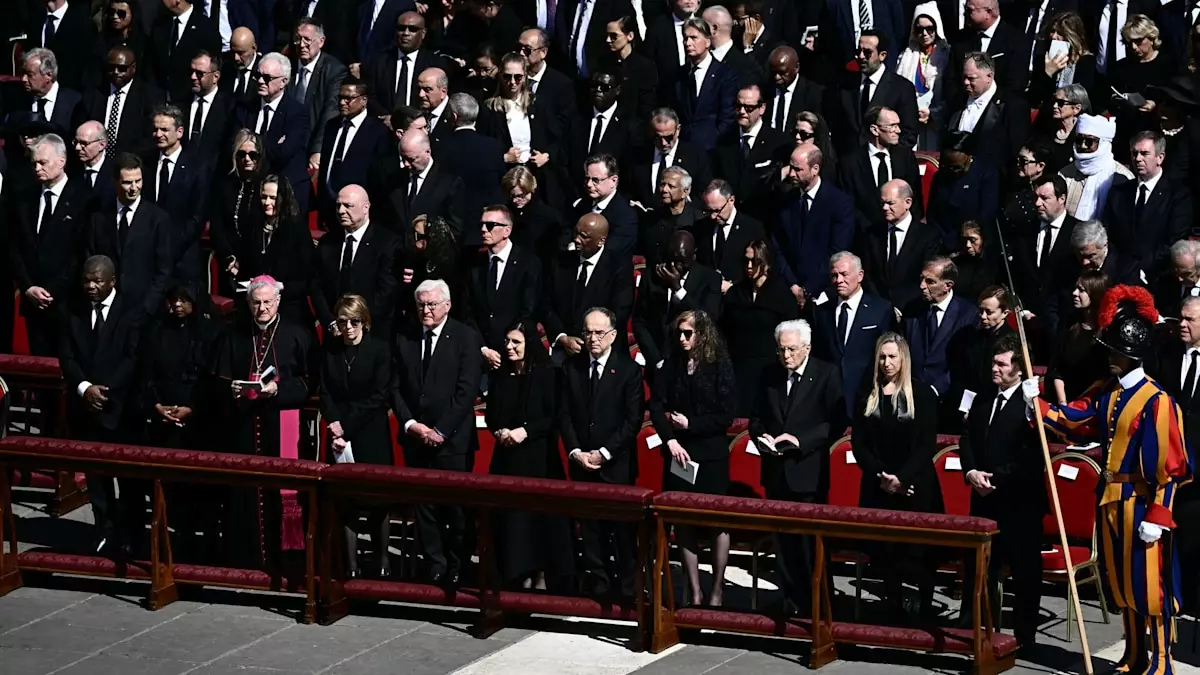The world of royal events is replete with traditions, protocols, and a keen sense of hierarchy, often reflected in the seemingly mundane seating arrangements. The recent funeral of Pope Francis was no exception, captivating royal watchers and political analysts alike with its deliberate structure. Observers noted how Prince William, representing King Charles III, found himself seated several rows back from other prominent leaders, perplexing many who expected a more prominent position. It’s essential to recognize that the placement was meticulously orchestrated, not merely a reflection of status but part of a broader diplomatic strategy.
The choice to arrange seating in alphabetical order—utilizing French terminology—was not just an exercise in order but also a nod to the language’s historical role as the lingua franca of diplomacy. This unexpected choice meant that leaders perceived as crucial to contemporary geopolitics, like Donald Trump or Queen Mary of Denmark, often took center stage, while William was strategically placed behind the Jordanian royals. Here lies an example of how protocol can sometimes overshadow personal prestige, challenging conventional views regarding status among global figures.
The Cardinal’s Touch: A Strategy Beyond the Norm
Cardinal Vincent Nichols provided insight into this “master plan,” referencing the significance of managing the egos of various world leaders. This thoughtful approach highlights a deep understanding of the nuances of diplomatic overtures, especially in a context where the stature of many participants could lead to power struggles. Nichols was unreserved in his praise, stating that organizing such a monumental event—given the unpredictable nature of international relationships—requires a strategic genius synonymous with the legacy of the Holy See.
Observationally, Nichols’ remarks shed light on a larger narrative at play; the Vatican has historically known how to manage international figures, leveraging mutual respect and tradition while fostering an environment for inclusivity. The Vatican’s past experiences with high-profile funerals—dating back centuries—come into play as events like these require adept handling of complexities. The art of diplomacy, then, becomes an interplay of respect and recognition, where the overt arrangements allow underlying tensions to remain dormant.
Traditional Roles in a Modern Context
Prince William’s presence at the funeral, far from being a mere symbolic gesture, signifies a continuation of a tradition that bridges the Anglican and Catholic communities. As the future Supreme Governor of the Church of England, his attendance underscores the importance of maintaining relations with the Catholic Church—crucial in today’s ecumenical landscape. This kind of participation isn’t a new phenomenon; it echoes past instances where British royals have engaged in such interfaith rituals, most notably Charles’s attendance at Pope John Paul II’s funeral.
This bespoke representation by William indicates a shift wherein the younger generation of royals is tasked with not just presiding over the British monarchy’s ceremonial roles but also engaging dynamically on the global stage. The absence of Catherine, Princess of Wales, perhaps due to familial commitments, further illustrates a modern interpretation of royal duties where family takes precedence, and representation may sometimes come from a singular individual.
A Futuristic Landscape for Royal Diplomacy
Analyzing these seating arrangements reveals more than mere formality; it invites us to contemplate the future of royal representation within an interconnected world. The Vatican is not just a religious institution but a significant player in international diplomacy, and the presence of various heads of state and royals serves as a reminder of ongoing global relationships that require careful management.
As we dissect the nuances of this event, it becomes evident that understanding the subtleties of representation—how seats are allocated, who is given prominence, and the underlying reasons for these decisions—can provide deeper insights into international relations and the balancing act that takes place behind closed doors. In an era where global crises demand cooperative action, the tools of diplomacy, whether through seating plans at solemn occasions or high-stakes negotiations, remain ever crucial in shaping a collaborative future.

Leave a Reply